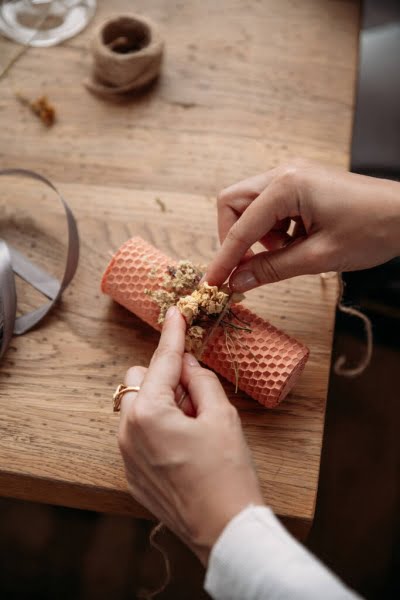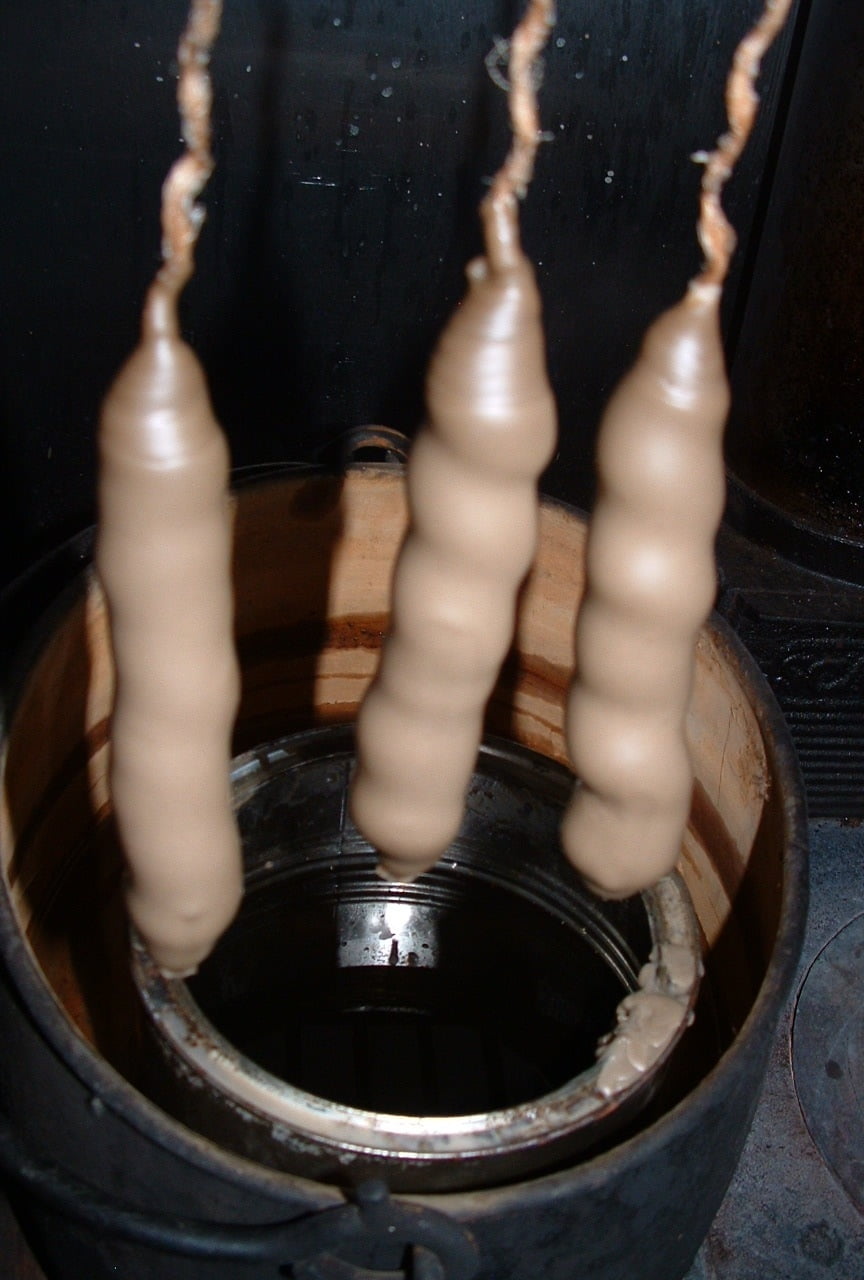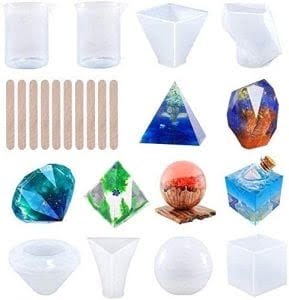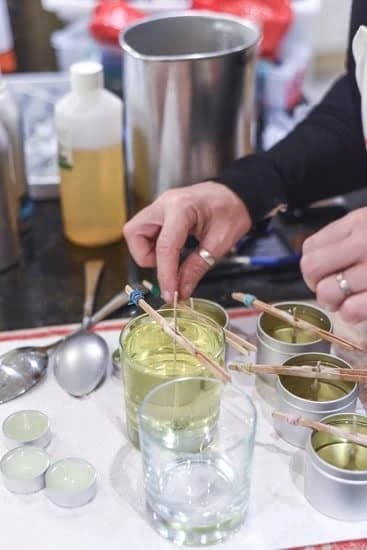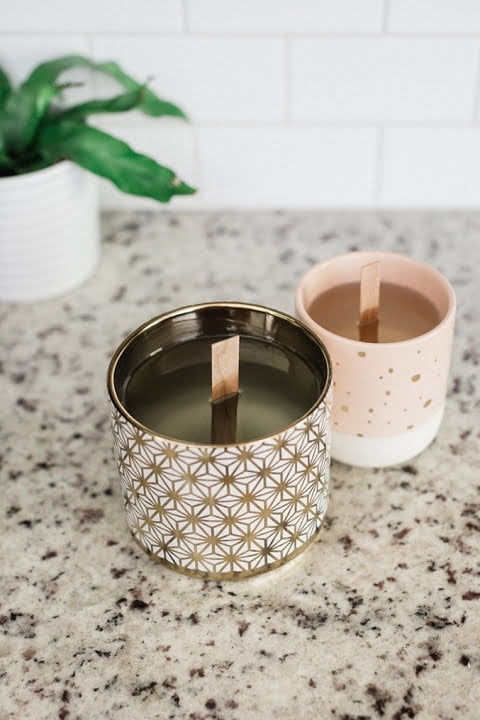Candle making is a popular and enjoyable hobby that allows individuals to create beautiful and fragrant candles for personal use or as gifts. However, it is crucial to prioritize safety when engaging in this activity to prevent accidents and ensure a pleasant experience. This article will provide a comprehensive guide on the safety measures that should be taken into consideration when making candles.
Understanding the potential hazards associated with candle making is essential for ensuring safety. Fire, burns, and toxic fumes are some of the risks involved. Being aware of these potential dangers will enable candle makers to take appropriate precautions from the very beginning.
Having the right safety equipment and tools is crucial for creating a safe environment during candle making. The article will highlight the must-have items that every candle maker should possess to protect themselves from harm.
Additionally, preparing a safe workspace is of utmost importance. Proper organization, ventilation, and awareness of potential hazards in your surroundings can significantly minimize risks. This section will delve into creating a safe environment for optimal well-being during the candle-making process.
By following proper handling and storage techniques, accidents and contamination can be avoided. This article will outline best practices for safely handling and storing candle making materials to maintain a risk-free space.
Understanding the Potential Hazards
Candle making can be a relaxing and rewarding hobby, but it is important to be aware of the potential hazards involved. Understanding the risks associated with fire, burns, and toxic fumes is crucial for ensuring the safety of yourself and others during the candle making process.
Fire
One of the most significant hazards in candle making is the risk of fire. Open flames are present during the melting and pouring stages, making it essential to take precautions to prevent accidents. Always work in a well-ventilated area away from flammable objects such as curtains or paper. Keep a fire extinguisher within reach and never leave melting wax unattended. It is also crucial to have a clean and clutter-free workspace to minimize the risk of fires.
Burns
Hot wax poses a burn hazard, so it is important to handle it with caution throughout the candle making process. Always use heat-resistant gloves or potholders when handling hot containers or utensils. When pouring wax into molds or containers, make sure they are stable and won’t tip over easily. Be mindful of any splashes or spills that can cause burns on your skin.
Toxic Fumes
Certain candle-making materials can produce toxic fumes when heated. To ensure your safety, always work in a well-ventilated area or use an exhaust fan to remove any potentially harmful vapors from the air. Avoid using ingredients that contain lead or other toxic substances. Additionally, carefully read labels on fragrance oils and dyes to ensure they are safe for candle making.
By understanding these potential hazards and taking proper precautions, you can create candles safely while minimizing risks. Remember that safety should always be your top priority when engaging in any hobby or craft activity, including candle making.
Essential Safety Equipment and Tools
Protective Clothing
When it comes to candle making, wearing the appropriate protective clothing is crucial for keeping yourself safe from potential hazards. Investing in a set of proper protective clothing can significantly minimize the risk of burns and injury. Some essential items to consider include:
- Apron or Lab Coat: A durable apron or lab coat made of flame-resistant material will protect your clothes from hot wax spills and splatters.
- Gloves: Heat-resistant gloves are essential for handling hot wax and other materials throughout the candle making process. Look for gloves that provide a good grip to ensure better control when pouring the wax.
- Safety Goggles: Protecting your eyes from potential splashes or fumes is essential during candle making. Safety goggles with side shields will shield your eyes and prevent any accidental exposure to heat, chemicals, or hot wax.
Fire Extinguisher
Having a fire extinguisher readily available in your workspace is a critical safety measure when working with open flames and flammable materials like wax and fragrances. It is important to choose the right type of fire extinguisher for this purpose. Class B or ABC-rated fire extinguishers are ideal for extinguishing fires caused by flammable liquids such as melted wax. Remember to familiarize yourself with how to use the fire extinguisher properly before starting your candle making process.
Ventilation
Proper ventilation is vital for maintaining air quality during candle making, as some materials used can release toxic fumes when heated. To ensure adequate ventilation, consider the following:
- Open Windows or Use Exhaust Fans: Opening windows or using exhaust fans can help remove any potentially harmful fumes from the workspace.
- Vent Hood: Installing a vent hood above your work area can be an effective way to eliminate fumes directly at their source. This keeps the air cleaner while you work on melting wax and adding fragrances or dyes.
- Respiratory Protection: Using a respiratory mask or respirator with appropriate filters can provide an additional layer of protection against inhaling harmful fumes.
By equipping yourself with the necessary safety equipment mentioned above, you are taking important steps towards ensuring your well-being and minimizing the risks associated with candle making. Remember, safety should always be a top priority in any creative endeavor, and candle making is no exception.
Preparing Your Workspace
Creating a safe workspace is crucial when it comes to candle making. By taking the necessary precautions and implementing safety measures, you can minimize the risks and ensure a safe environment for yourself and others involved in the process. Here are some essential steps to follow when preparing your workspace for candle making:
- Choose an appropriate location: Selecting the right location for your candle making activities is important. Find an area that is well-ventilated and away from any flammable materials or heat sources. Avoid working near open flames, such as stoves or fireplaces, as they can increase the risk of accidents.
- Clear clutter and obstacles: Before you begin your candle making project, make sure to clear any clutter or obstacles from your workspace. This includes removing unnecessary items or materials that may pose a fire hazard or hinder your movement during the process.
- Use a dedicated work surface: It’s recommended to have a dedicated work surface solely for candle making purposes. This helps prevent cross-contamination with other household items and ensures that all materials are properly organized and within reach.
- Protect your work surface: To avoid damage to your work surface and prevent accidental spills or stains, consider covering it with materials such as newspaper, wax paper, or plastic sheets. These protective layers will also make it easier to clean up any wax drips or spills that may occur.
- 5.Invest in proper lighting: Adequate lighting is essential for working safely and accurately when making candles. Make sure your workspace is well-lit so that you can easily see what you are doing and avoid any mishaps.
By following these guidelines when preparing your workspace, you can create a safe environment that reduces the risk of accidents or injuries during candle making.
| Workspace Preparation Tips |
|---|
| Choose a well-ventilated location away from flammable materials and heat sources. |
| Clear clutter and obstacles from your workspace. |
| Use a dedicated work surface solely for candle making purposes. |
| Protect your work surface with materials like newspaper or wax paper. |
| Ensure adequate lighting in your workspace. |
Proper Handling and Storage of Candle Making Materials
When it comes to candle making, handling and storing the materials correctly is essential to ensure safety and prevent accidents. Proper handling techniques reduce the risk of spills, burns, and exposure to toxic substances. Additionally, appropriate storage practices help maintain the quality of your materials and extend their shelf life. This section will provide you with useful guidelines for safely handling and storing candle making materials.
1. Containers: When working with candle making ingredients such as wax, fragrances, or dyes, it is crucial to use suitable containers. Opt for heat-resistant containers that can withstand the temperature of melted wax without cracking or melting themselves. Remember to label your containers clearly to avoid confusion.
2. Spills: Accidental spills are common during the candle making process. To prevent injuries or damage, always have a clean-up plan in place before starting your project. Keep absorbent materials like paper towels or spill kits nearby to quickly clean up any spills or drips.
3. Ventilation: Some candle making materials, such as fragrance oils or certain types of wax, can emit strong odors or hazardous fumes if not properly ventilated. It is important to work in a well-ventilated area or set up ventilation equipment like fans or open windows to disperse odors and fumes.
4. Contamination: To avoid cross-contamination between different ingredients, always use separate tools for each material during the candle making process. This practice prevents unwanted mixing of scents, colors, or potential reactions between incompatible substances.
Proper Handling and Storage Tips
| Tips |
|---|
| 1. Always wear appropriate personal protective equipment (PPE) such as gloves and safety goggles when working with hot wax or other potentially hazardous materials. |
| 2. Store your candle making materials in a cool, dry place away from direct sunlight and heat sources to preserve their quality and prolong their shelf life. |
| 3. Keep flammable materials such as wicks or solvents away from open flames or ignition sources to prevent accidents or fire hazards. |
| 4. Use sealed containers for storing your fragrance oils and essential oils to prevent evaporation and maintain their potency over time. |
By following these proper handling and storage practices, you can minimize accidents, maintain the quality of your candle making materials, and ensure a safe working environment for yourself and others involved in the process. Safety should always be a top priority when indulging in this creative hobby.
Safe Candle Making Techniques
Using Double Boiling Method
One of the important safety techniques in candle making is to use the double boiling method. This involves melting wax using a heat-resistant container placed inside another pot filled with water, which is then heated on a stove.
By using this method, the direct contact between the heat source and the wax is minimized, reducing the risk of fire and burns. It is essential to ensure that the water in the outer pot does not boil dry, as it can lead to overheating and ignition of flammable materials.
Proper Wax Temperature
Maintaining proper wax temperature during candle making is crucial for safety purposes. Different types of waxes have specific melting points, and it is important to follow the manufacturer’s instructions. Overheating wax can result in ignition or scorching, while underheating can cause poor fragrance release or uneven burning.
Using a thermometer to monitor the wax temperature is highly recommended to avoid any accidents. Additionally, when adding fragrance oils or dyes, it is essential to make sure they are suitable for use with candles and are added at the correct temperature.
Adequate Ventilation
Having adequate ventilation in your workspace is vital for safe candle making. The fumes emitted during the melting process can be toxic and harmful if inhaled excessively. It is recommended to work in an area with good airflow or use fans or open windows if necessary.
This helps in reducing exposure to harmful fumes such as volatile organic compounds (VOCs) that may be present in certain types of waxes or fragrance oils. Ensuring proper ventilation not only protects your health but also creates a more comfortable working environment.
By following these safe candle making techniques, you can significantly minimize risks associated with this craft. Remember always to prioritize safety above everything else, from using the double boiling method and maintaining proper wax temperature to ensuring adequate ventilation. Ensuring safety measures are in place will not only prevent accidents and injuries but also provide a more enjoyable candle making experience overall.
Fire Safety Protocols
When working with open flames and hot wax, it is crucial to have a thorough understanding of fire safety protocols. While accidents are rare, being prepared for an emergency can help prevent further damage and ensure the safety of everyone involved. Here are some important steps to follow in case of a fire during candle making:
Stay Calm
The most important thing to remember during a fire emergency is to stay calm. Panicking can hinder your ability to think clearly and take appropriate action. Take a deep breath, assess the situation, and then act accordingly.
Alert Others
If you are not alone, immediately alert others in the area about the fire. Shout “Fire.” or activate any available alarm systems to ensure that everyone is aware of the danger.
Extinguish Small Fires
For small fires that can be easily contained, use an appropriate extinguisher or suffocate the flames with a blanket or non-synthetic fabric. Make sure you know how to correctly use a fire extinguisher before attempting to do so.
Evacuate Safely
If the fire is spreading rapidly or cannot be easily contained, prioritize your safety and evacuate immediately. Avoid using elevators and always take the stairs when exiting a building in case of fire.
Contact Emergency Services
Once you have reached a safe location, call emergency services (such as 911) right away to report the incident and provide specific details about the situation.
Remember, prevention is key when it comes to fire safety during candle making. Regularly inspect your workspace for potential hazards, such as flammable materials near open flames or heat sources, and make sure you have properly functioning smoke detectors and fire extinguishers on hand. Being proactive and prepared can greatly reduce the risk of a fire emergency and ensure a safer candle making experience.
Handling Hot Wax and Pouring Techniques
One of the most important aspects of candle making is handling hot wax safely and using proper pouring techniques to prevent burns. Working with hot wax can be dangerous if not done correctly, as it can cause severe burns and other injuries. It is essential to take necessary precautions and follow safe practices to ensure a risk-free candle making experience.
To prevent burns during candle making, it is crucial to have the right equipment and tools. A quality heat-resistant double boiler or a melting pot specifically designed for candle making is recommended to melt the wax safely. These containers are made of materials that can withstand high temperatures, reducing the risk of accidents.
Another safety measure is to use proper pouring techniques when transferring the melted wax into molds or containers. The following tips can help prevent burns:
– Maintain a steady hand while pouring the wax to avoid splashes or spills.
– Avoid overfilling the molds or containers, as excess liquid wax can overflow and cause accidents.
– Use a heat-resistant pouring pitcher with a spout for precise and controlled pouring.
– Stand on a stable surface when pouring hot wax to minimize the risk of tripping or falling.
In addition to handling hot wax safely, it is essential to use appropriate personal protective equipment (PPE) such as heat-resistant gloves and long sleeves. These items provide an extra layer of protection against accidental contact with hot surfaces or spilt wax.
Taking these safety measures while handling hot wax and using proper pouring techniques will greatly reduce the risk of burns during candle making. By prioritizing safety, candle makers can enjoy their craft without compromising their well-being.
Choosing Safe Fragrances and Dyes
Candle making involves the use of fragrances and dyes to add color and scent to the candles. However, it is important to prioritize safety when choosing these additives to avoid using toxic substances that could be harmful when burned. Here are some tips for choosing safe fragrances and dyes in candle making:
- Look for natural alternatives: Instead of using synthetic fragrances and dyes, consider opting for natural alternatives. Essential oils can be used as a safer alternative to synthetic fragrances, as they are derived from plants and do not contain harmful chemicals. Similarly, natural colorants such as beetroot powder or dried flowers can be used instead of artificial dyes.
- Research fragrance and dye suppliers: When purchasing fragrances or dyes for candle making, make sure to research the suppliers and brands thoroughly. Look for reputable suppliers who provide detailed information about the ingredients used in their products. Avoid purchasing from unknown or unreliable sources, as they may use low-quality or toxic substances in their products.
- Check for safety certifications: Certain regulatory bodies provide safety certifications for fragrances and dyes that meet specific standards in terms of toxicity levels. Look for products that have been certified by reputable organizations such as IFRA (International Fragrance Association) or FDA (Food and Drug Administration). These certifications ensure that the fragrances and dyes are safe to use in candle making.
Remember, choosing safe fragrances and dyes is essential not only for your own safety but also for the health of those who will be burning your candles. By prioritizing quality and safety in your selection process, you can create candles that are both beautiful to look at and safe to burn.
Choose Safe Fragrances:
– Opt for natural alternatives like essential oils.
– Research fragrance suppliers.
– Check for safety certifications.
Choose Safe Dyes:
– Consider natural colorants instead of artificial dyes.
– Thoroughly research dye suppliers.
– Look for safety certifications from reputable organizations.
Best Practices for Burning and Enjoying Candles Safely
Burning candles can create a warm and cozy atmosphere in our homes, but it is important to practice safe candle use to prevent accidents or injuries. Here are some best practices for burning and enjoying candles safely:
- Never leave a burning candle unattended: It is crucial to always keep an eye on a lit candle and never leave it burning when you leave a room or go to sleep. A flickering flame can easily ignite nearby objects, leading to a fire.
- Keep candles away from flammable materials: Make sure that your candles are placed on heat-resistant surfaces, away from curtains, papers, books, or any other flammable items. Remember that the flame of the candle can flicker and cause nearby objects to catch fire.
- Trim the wick before lighting: Before lighting a candle, trim the wick to about ¼ inch in length. This helps prevent excessive smoke, soot, and uneven burning. Long or crooked wicks can cause the flame to become too large and increase the chances of accidents.
- Use proper candle holders: Always place candles in sturdy candle holders made of non-combustible materials like glass or metal. This will ensure that the candle is secure and won’t tip over accidentally.
- Keep out of reach of children and pets: Children and pets may be curious about candles and could accidentally knock them over or get burned if they come into contact with an open flame or hot wax. Keep candles out of their reach or consider using flameless LED candles as a safer alternative.
- Extinguish properly: When extinguishing a candle, use a snuffer or wet your fingers (if no other option is available) to gently press down on the wick until it’s fully submerged in the wax pool. This helps prevent hot wax from scattering or splashing onto surroundings.
By following these best practices for burning and enjoying candles safely, you can minimize the risks and enjoy the ambiance that candles bring without compromising the safety of your home. Remember, prioritizing safety is essential for a pleasant and risk-free candle experience.
Conclusion
In conclusion, it is crucial to prioritize safety when engaging in the art of candle making. By understanding and being aware of the potential hazards associated with this craft, individuals can take the necessary steps to ensure a pleasant and risk-free experience.
One of the key aspects of maintaining safety in candle making is having the essential safety equipment and tools. These must-haves include fire extinguishers, heat-resistant gloves, goggles, and an apron to protect against burns and any potential accidents. Additionally, preparing a safe workspace is essential. This involves maintaining a clear area free of clutter, ensuring proper ventilation to prevent toxic fumes from accumulating, and having adequate lighting for visibility.
Proper handling and storage of candle making materials are also crucial aspects that contribute to safety. It is important to handle hot wax with caution and use appropriate pouring techniques to minimize the risk of burns or spills that can lead to accidents. Furthermore, selecting safe fragrances and dyes is imperative to avoid exposure to toxic substances during the candle-making process.
Lastly, it is vital to practice safe burning and enjoyment of candles once they are made. This includes keeping candles away from flammable objects or materials, never leaving them unattended while lit, and being cautious when trimming wicks.
By adhering to these safety measures throughout every stage of candle making, individuals can enjoy a pleasant experience free from accidents or harm. It is always better to prioritize safety rather than compromising it for convenience or aesthetics. Remember: Safety should be at the forefront when creating candles for yourself or others.

Welcome to my candle making blog! In this blog, I will be sharing my tips and tricks for making candles. I will also be sharing some of my favorite recipes.

